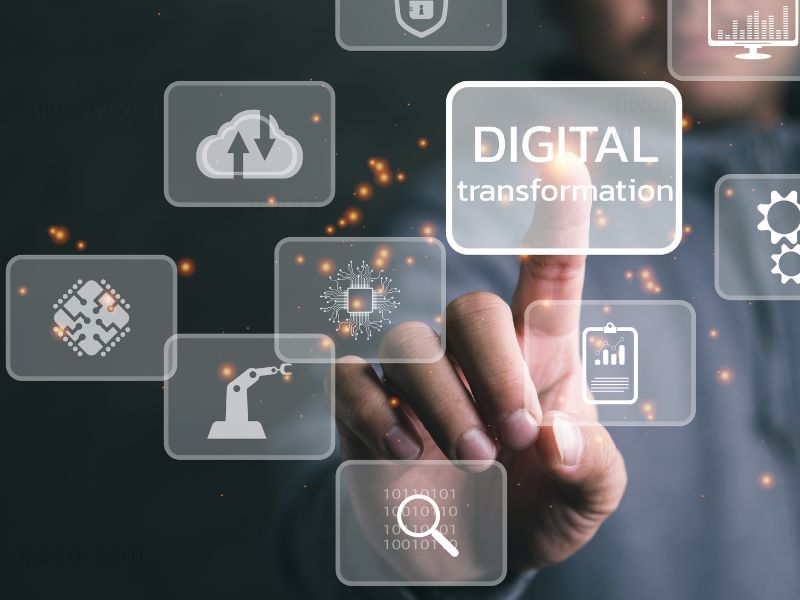The Tidal Wave of Technological Change in Long Island’s Traditional Industries
Most job opportunities in Long Island are undergoing a remarkable transformation, and technology is at the heart of this change. Long Island, often known for its picturesque beaches and tranquil suburbs, is now evolving into a dynamic hub for technology, innovation, and digital transformation. This evolution is reshaping the way traditional industries operate, and in the process, opening up a plethora of opportunities for the workforce.
Transformation into a Technology Epicenter
Long Island and its neighboring Queens are not just resting on their historical laurels. They’re actively striving to become the next big tech hubs. This proactive approach helps these businesses not only to adapt to the changing landscape but also to rebound from economic downturns with vigor.
With initiatives like the Tech Council in Queens, local companies are being empowered to embrace technological advancements. The Queens Tech Council is an independent initiative that aims to make Queens borough in New York City a great home for tech. They are committed to creating a diverse, inclusive, thriving, and self-sustaining tech economy in Queens, New York. The council is proud to partner with their member companies and multiple organizations to achieve this goal. They offer various programs such as the Queens Tech Incubator which provides office space for tech companies. If you are interested in applying for the Queens Tech Incubator, you can apply through the Queens Chamber of Commerce and the Queens Tech Council. You can learn more about becoming a member of the Queens Tech Council on their website.
The Rise of the Tech Highway
Accelerate Long Island isn’t just a catchy phrase—it signifies a mission. This organization, initially rooted in promoting economic growth in Long Island, is broadening its horizons to encompass startups in the bustling metropolis of New York City. Such expansions are a testament to the increasing role of technology in the region. It’s clear that the future of Long Island is intertwined with technological advancements.
The Accelerate Long Island effort is a unique collaboration between Long Island’s world-class research institutions and its business community to commercialize research and create an entrepreneurial ecosystem. They aim to promote economic growth by providing early-stage funding for companies that are commercializing technologies. The organization has a seed fund that was established by a $500,000 grant from New York State Empire State Development awarded in 2023 by the Long Island Regional Economic Development Council. The seed fund made grants to ten portfolio companies in the biotech and energy sectors, and those grants were matched by the Long Island Emerging Technologies Fund (LIETF), which includes Topspin Partners and Jove Equity Partners. The portfolio has been very successful in securing follow-on funding.
Manufacturing Meets Modernity
The manufacturing sector in Long Island has always been a powerhouse. But now, it’s not just about machinery and manual labor. Digital technologies are altering the fabric of manufacturing. Gone are the days of solely macro-structural production models. Today, micro-structural models, infused with elements of Industry 4.0, are taking center stage. This shift is influencing the circular economy and making manufacturing on Long Island more efficient and innovative.
Unveiling Industry 4.0: The Fourth Industrial Revolution
Most job opportunities in Long Island and, indeed, around the world are being influenced by the waves of technological change brought about by Industry 4.0. But what exactly is this concept that’s reshaping our industries and the job market?
A Glimpse into the Past
To understand Industry 4.0, it’s helpful to take a quick journey through the previous industrial revolutions:
- The First Industrial Revolution (late 18th to early 19th century) was powered by steam and water, leading to the mechanization of production.
- The Second Industrial Revolution (late 19th to early 20th century) introduced electricity, enabling mass production.
- The Third Industrial Revolution (late 20th century) heralded the era of computers and automation.
Enter Industry 4.0
Now, we’re in the midst of the Fourth Industrial Revolution, commonly termed Industry 4.0. This revolution is characterized by the fusion of physical and digital technologies. It’s not just about automation but “smart” automation.
Pillars of Industry 4.0
Industry 4.0 stands on several technological pillars:
- Internet of Things (IoT): Devices, machines, and appliances are connected to the internet, communicating with each other and with humans in real-time.
- Big Data and Analytics: Vast amounts of data generated by these connected devices are analyzed to derive actionable insights, improving operational efficiency.
- Cyber-Physical Systems: These are integrations where computer-based algorithms communicate with physical processes, leading to decentralized decisions.
- Artificial Intelligence and Machine Learning: Systems are not just automated; they’re intelligent. They can learn from data, predict outcomes, and make decisions.
- Robotics and Automation: Advanced robots are now capable of performing tasks that were once considered too complex or delicate for machines.
- Virtual Reality (VR) and Augmented Reality (AR): These technologies offer immersive training experiences and can assist workers in complex tasks.
- Cloud Computing: The cloud allows for data storage, processing, and analysis on virtual platforms, offering flexibility and scalability.
- Digital Twins: Digital replicas of physical assets allow for simulation, analysis, and control.
Impact on Traditional Industries
Industry 4.0 is revolutionizing how industries function. Here’s how:
- Customization: Industries can produce highly customized products in small quantities at the cost of mass production.
- Efficiency: With real-time data and analytics, industries can optimize operations, reducing waste and improving efficiency.
- Flexibility: Industries can swiftly adapt to changes in the market or disruptions in the supply chain.
- Safety: Advanced robotics can take over hazardous tasks, ensuring human safety.
- Innovation: With the convergence of various technologies, there’s a boost in innovation, leading to the development of new products and services.
Relevance to Long Island’s Job Market
The integration of Industry 4.0 technologies means that most job opportunities in Long Island will demand a different skill set. There will be a need for professionals who understand these technologies and can integrate them into various sectors. While some traditional roles might become obsolete, a plethora of new roles will emerge, offering exciting opportunities for the workforce of Long Island.

Bridging the Digital Divide
While technology is an enabler, it also poses challenges. One such challenge is the digital divide. Recognizing this, Long Island is on a mission to ensure everyone has access to the internet. By expanding internet access, traditional businesses are better equipped to adapt and flourish in this digital era.
The Employment Landscape in the Era of Technology
Most job opportunities in Long Island are no longer confined to traditional roles. With the influx of technology, there’s a duality in the employment scenario. On one hand, there’s a risk of lower wages, the potential for deskilling, and a possible decline in job quality. But on the flip side, the manufacturing industry in Long Island is a beacon of hope. It stands as an epitome of inclusivity, employing a diverse mix of individuals from various educational backgrounds. This emphasizes that the industry isn’t just for a select few but is accessible to many.
In Conclusion
The winds of technological change are blowing strong over Long Island, altering its traditional industries in ways one could have only imagined a few decades ago. From manufacturing to economic growth, the influence of technology is pervasive. As Long Island continues to integrate technology into its core sectors, the landscape of most job opportunities in Long Island will be enriched, offering a promising future for its inhabitants.
© 2016-2023 by LIWork.com, a LiVenture. All rights reserved. No part of this document may be reproduced or transmitted in any form or by any means, electronic, mechanical, photocopying, recording, or otherwise, without prior written permission of LiVentures.

Leave a Reply